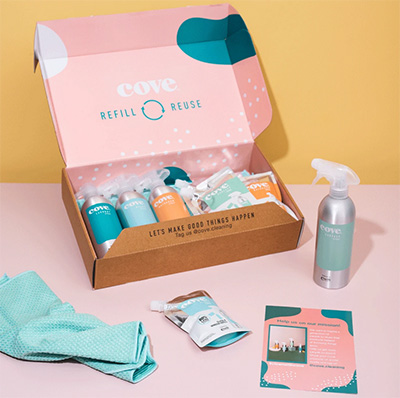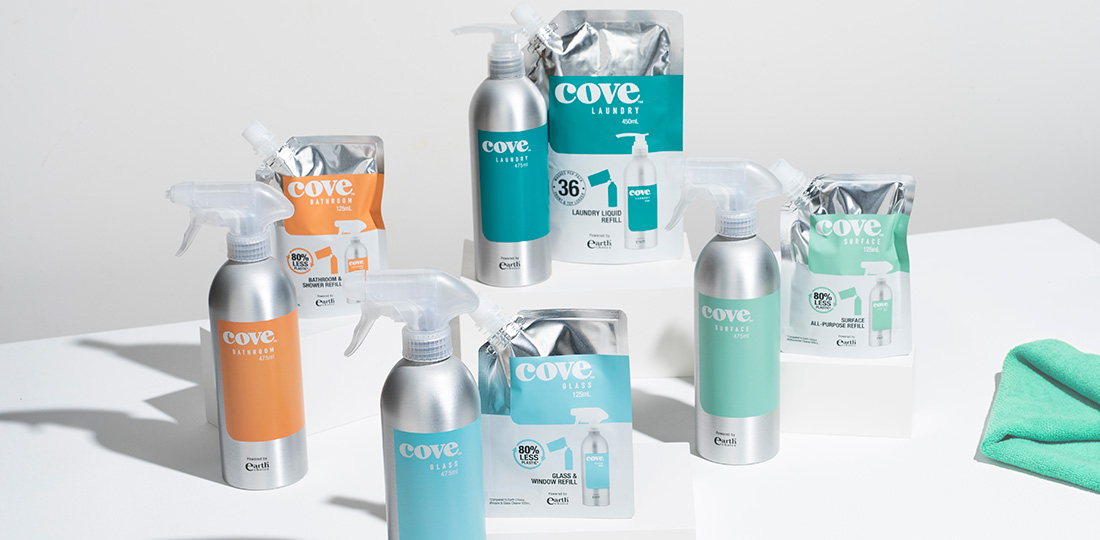If only I could get my shampoo and body wash bottles refilled.
Every time I purchase a new shampoo or other expensive hair care product from my hairdresser, I walk away wondering why I can’t take the empty bottles back and have them refilled? I do the same for my bathroom and cleaning products and realised that this is an area that needs further exploration by packaging technologists and designers as we move towards circular packaging design.
Whilst Refillable Packaging is gaining momentum across beauty, hair, and household categories the development of innovative concepts seems to be untapped.
In 2019 Ellen MacArthur Foundation’s New Plastics Economy initiative introduced its research on reuse models. Converting 20% of global plastic packaging into reuse models offers a USD 10 billion business opportunity. The research highlights six ways that reuse can bring significant benefits to both users and businesses: 1. Cut costs 2. Adapt to individual needs 3. Optimise operations 4. Build brand loyalty 5. Improve user experience 6. Gather intelligence.
 Before you set out to design Refillable Packaging, I would encourage you to build an evidence-based case that includes Lifecycle Assessment and measurements to ensure that the packaging materials and design selected are optimal. Refillable Packaging does come with several challenges and design considerations, including that the materials selected are not only sustainable, but also capable of withstanding multiple usage. This involves incorporating Life Cycle Analysis (LCA) investigation into the development of the design to ensure the ‘number of uses’ and the final disposal of the reuse container will have a better environmental impact than a recyclable package. Understanding the lower environmental impacts that the packaging offers, including how many uses are required for the new packaging, are invaluable pieces of consumer communication and messaging.
Before you set out to design Refillable Packaging, I would encourage you to build an evidence-based case that includes Lifecycle Assessment and measurements to ensure that the packaging materials and design selected are optimal. Refillable Packaging does come with several challenges and design considerations, including that the materials selected are not only sustainable, but also capable of withstanding multiple usage. This involves incorporating Life Cycle Analysis (LCA) investigation into the development of the design to ensure the ‘number of uses’ and the final disposal of the reuse container will have a better environmental impact than a recyclable package. Understanding the lower environmental impacts that the packaging offers, including how many uses are required for the new packaging, are invaluable pieces of consumer communication and messaging.
In addition, Hygiene, Safety and Cleaning protocols need to be considered as well as accuracy of the equipment that weights and measures the refilling process. Refillable Packaging design also needs to ensure that it is intuitive, user-friendly and an affordable alternative to introducing more plastics into the ecosystem. Incorporating recycled content is also paramount wherever possible.
Refillable Packaging is not only better for the environment, but it is also another way to actively engage consumers in the sustainable journey of a brand. Brands need to communicate with consumers the true benefits of Refillable Packaging systems including reduction of unnecessary plastics, use of recycled content, recyclability of the packaging and consumer convenience. Brand loyalty could also be improved by developing reward and incentive programs for those consumers who actively support a Refillable Packaging Program.
A number of examples that stood out to me include local manufacturer Natures Organics, Nivea, Olay and the Body Shop who were one of the pioneers in this space 3 decades ago.
Natures Organics inspiring the next generation to reuse
In August 2020, Australian company Natures Organics launched a refillable and reusable starter kit for the Cove laundry and bathroom cleaning range. The Starter kit comes with aluminium reusable bottles and pouches for refilling the respective products. The company has also designed the refill pouches to contain more active ingredients and at least 75% less water compared to normal cleaning products. This ensures that the environmental footprint of the product is less during transportation and consumers can simply add water to the products at home from the tap. Natures Organics have partnered with REDcycle to ensure that the refill packs are recycled. The products are shipped in cardboard cartons made from recycled material.
Shower Gel Refill Stations trials
In August 2020, German skincare manufacturer Beiersdorf announced that their largest global brand, NIVEA, had just launched its first shower gel refill station. The prototype, which are in select DM stores in Hamburg and Ettlingen, will investigate the concept of reusable bottles with consumers. The refilling machine has been designed, developed, and engineered by a cross-functional team within Beiersdorf’s global packaging and R&D functions.
Olay Skin Care Refillable Containers to target Millennials
In 2019 P&G’s Olay skin care brand announced that its Olay Regenerist Whip moisturiser was selling in refillable containers as part of a trial to reduce plastics waste. The skin care packaging contains a jar of cream and one refill pod of moisturiser that can be placed inside the jar once it is emptied. P&G indicated that the packaging will also be sold and shipped in a container made of 100% recycled paper and would have no outer carton to cut paperboard use. P&G said the Olay pilot could be a way to attract more millennials, whose purchases of the Olay brand grew 8% last year.
Body Shop offers refillable shower gel
In 2019 Body Shop established a UK concept store in London that includes trials for a refillable shower gel station. Interestingly, this is not the first time that Body Shop have had refillable packaging systems in-store. In fact, they trialled a similar program in the 90’s, but sadly consumers thirty years ago were unable to understand, or embrace, the concept.
I look forward to seeing the results of these initiatives, as for consumers like me to embrace Refillable Packaging Systems the program needs to be easy to use, intuitive, affordable and convenient to access.
The reduction of plastics waste across the globe would be significant if everyone started to embrace Refillable Packaging Programs and environmental visionaries like Body Shop Founder, the late Anita Roddick, would be proud that consumers are taking ownership of their environmental footprint.
My haircare, beauty and cleaning products are ready to be refilled. Who is up for the challenge?
Nerida Kelton MAIP
Executive Director – Australian Institute of Packaging (AIP)
ANZ Board Member – World Packaging Organisation (WPO)

